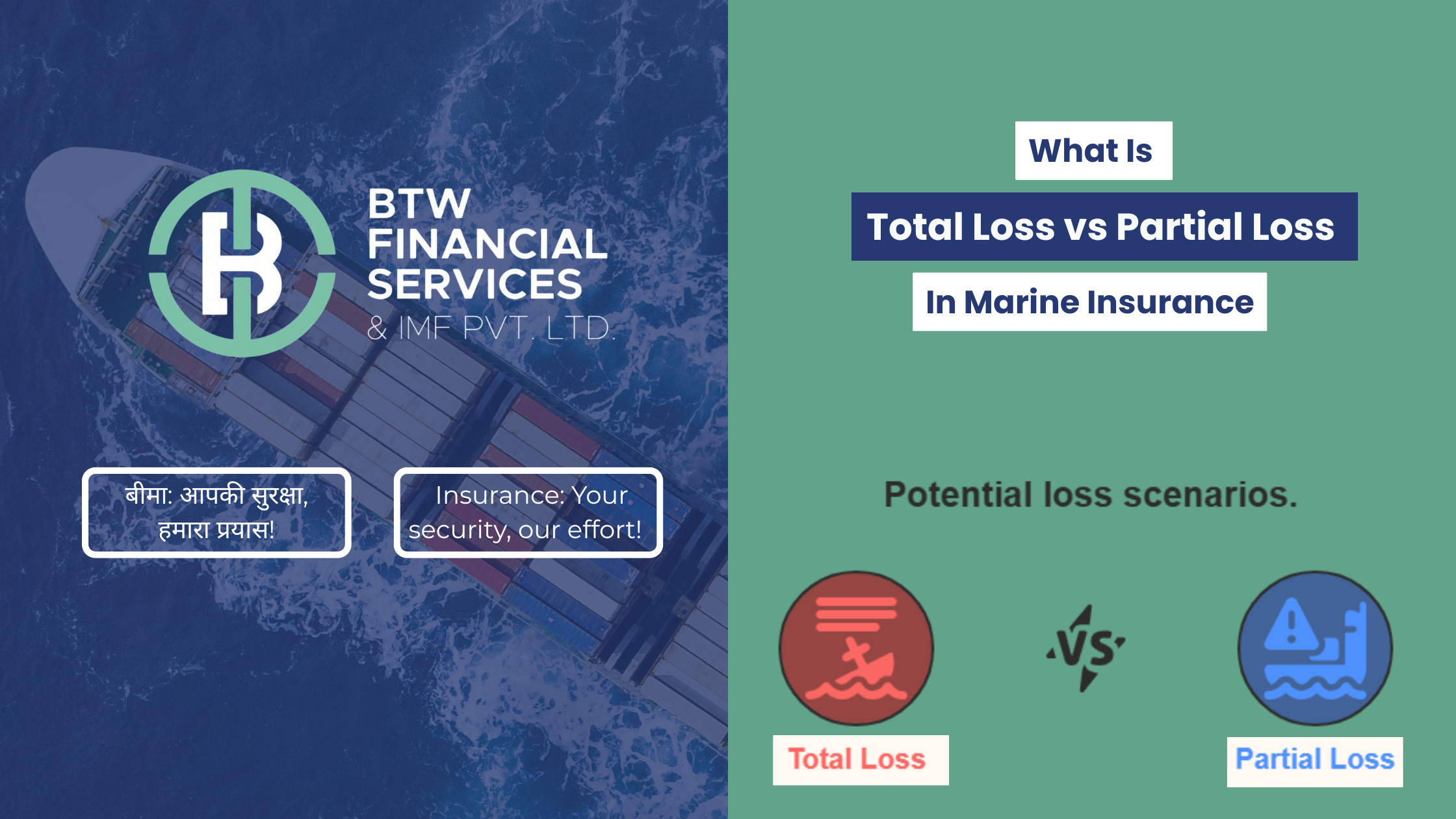
Understanding the distinction between total vs partial marine insurance loss is essential for selecting the right insurance coverage. Whether your cargo is fully lost or only partly damaged, clarity on these terms ensures you’re adequately protected and well-prepared when filing claims.
Introduction
Marine insurance claims generally fall into two broad categories: total loss and partial loss. Knowing which category aligns with a specific situation guides better policy coverage decisions. This blog explains both types, includes a data snapshot ideal for creating an infographic, and shows how BTW IMF can assist with precise coverage and claims support.
🧭 What Is Total Loss?
A total loss occurs when the cargo or vessel is completely destroyed or when recovery costs exceed its value—meaning it’s not financially viable to reclaim.
- Actual Total Loss (ATL)
This happens when cargo is physically destroyed or lost, such as in the case of a ship sinking or fire consuming goods. - Constructive Total Loss (CTL)
Occurs when goods or vessels remain but are too costly to salvage or repair—prompting abandonment and entitlement to full insured value.
In both cases, the insurer pays the full insured value, and ownership transfers to the insurer.
⚠️ What Is Partial Loss?
A partial loss happens when only part of the cargo or vessel is damaged, and recovery is still economically sensible.
- Particular Average
This covers damage to specific cargo items due to incidents like weather or mishandling, but only to the affected items. - General Average
Applies when cargo is deliberately sacrificed (e.g. jettisoned) to save the voyage—losses are shared proportionally among stakeholders.
📊 Data Snapshot (Infographic‑Ready)
- 35% of marine insurance claims in 2023 were for partial losses, such as damage during handling or delays.
- 15% of claims involved total losses (ATL + CTL), including catastrophic events.
- ~5% of voyages trigger a general average event, typically due to emergencies like storms.
These figures underline why distinguishing between total vs partial marine insurance loss is critical to choosing the right policy.
🔍 Comparison Table
| Feature | Total Loss | Partial Loss |
|---|---|---|
| Damage Extent | Complete destruction or irrecoverable | Only a portion of cargo/vessel damaged |
| Sub-Types | ATL, CTL | Particular Average; General Average |
| Compensation | Full insured value | Partial indemnity proportional to damage |
| Ownership Transfer | Yes (to insurer) | No |
| Claim Requirements | Abandonment notice needed (CTL) | Survey report and documentation |
✅ Why This Distinction Matters
- Policy Fit: If you’re shipping through high-risk zones (e.g., piracy-prone areas), ensure CTL coverage is included.
- Claims Preparedness: ATL/CTL claims need abandonment notice; partial losses require detailed damage surveys.
- Financial Planning: Knowing whether you will receive full or partial reimbursement helps in forecast and budgeting.
🤝 How BTW IMF Supports You
- We clarify total vs partial marine insurance loss definitions clearly in your policy documents.
- We customize coverage—including ATL, CTL, particular average, and general average—based on your cargo type and route risk.
- Our claims team provides support with documentation, such as abandonment notices or survey reports, to ensure smooth settlement.
Conclusion
Understanding total vs partial marine insurance loss empowers you to choose accurate and relevant coverage, minimize surprises, and strengthen your supply chain protection. Whether dealing with complete loss or partial damage, BTW IMF ensures your marine policy aligns with real-world risks and delivers clarity and support when needed.
📞 Contact BTW IMF today to discuss coverage tailored to your cargo type, route, and risk profile.





